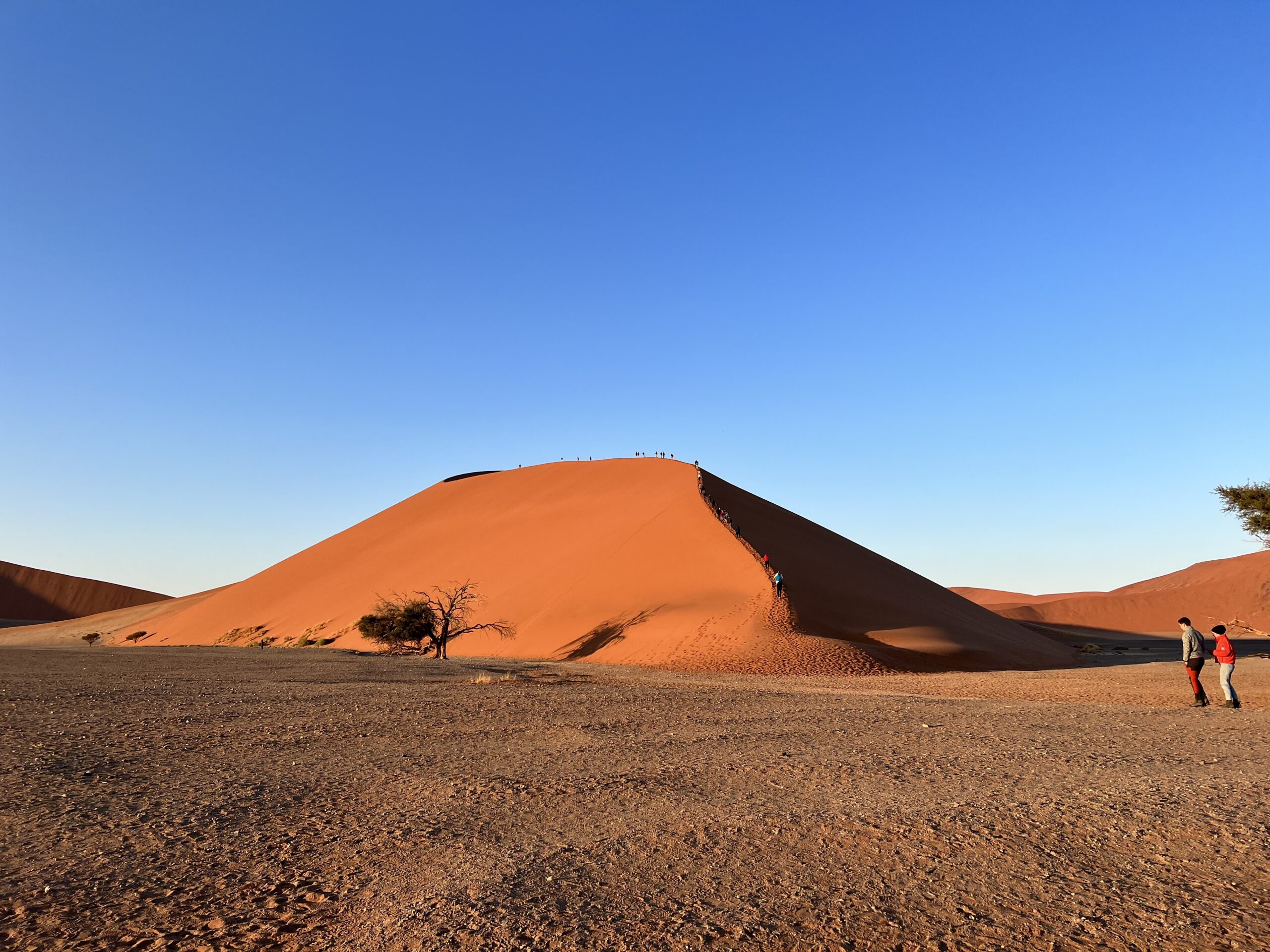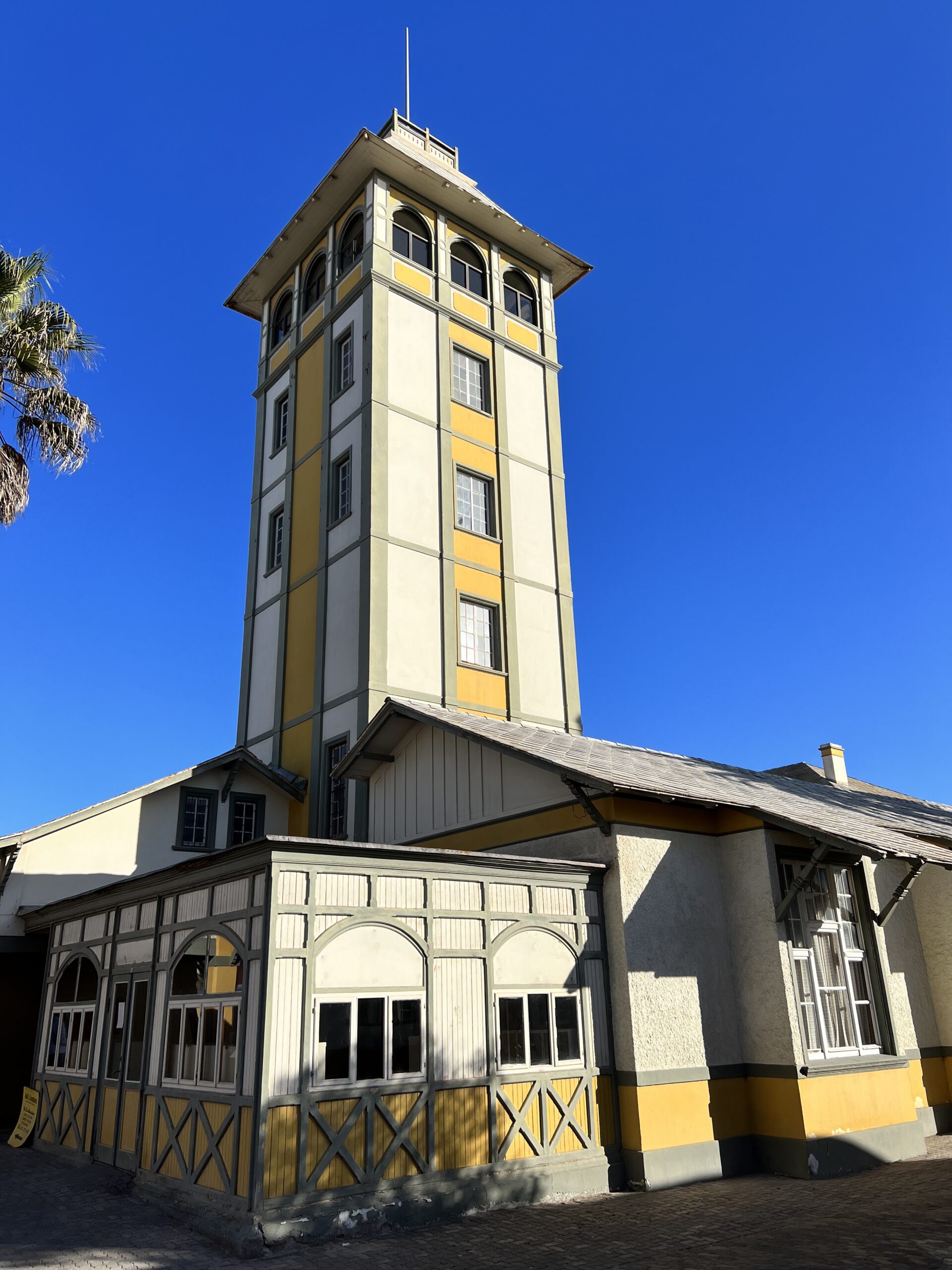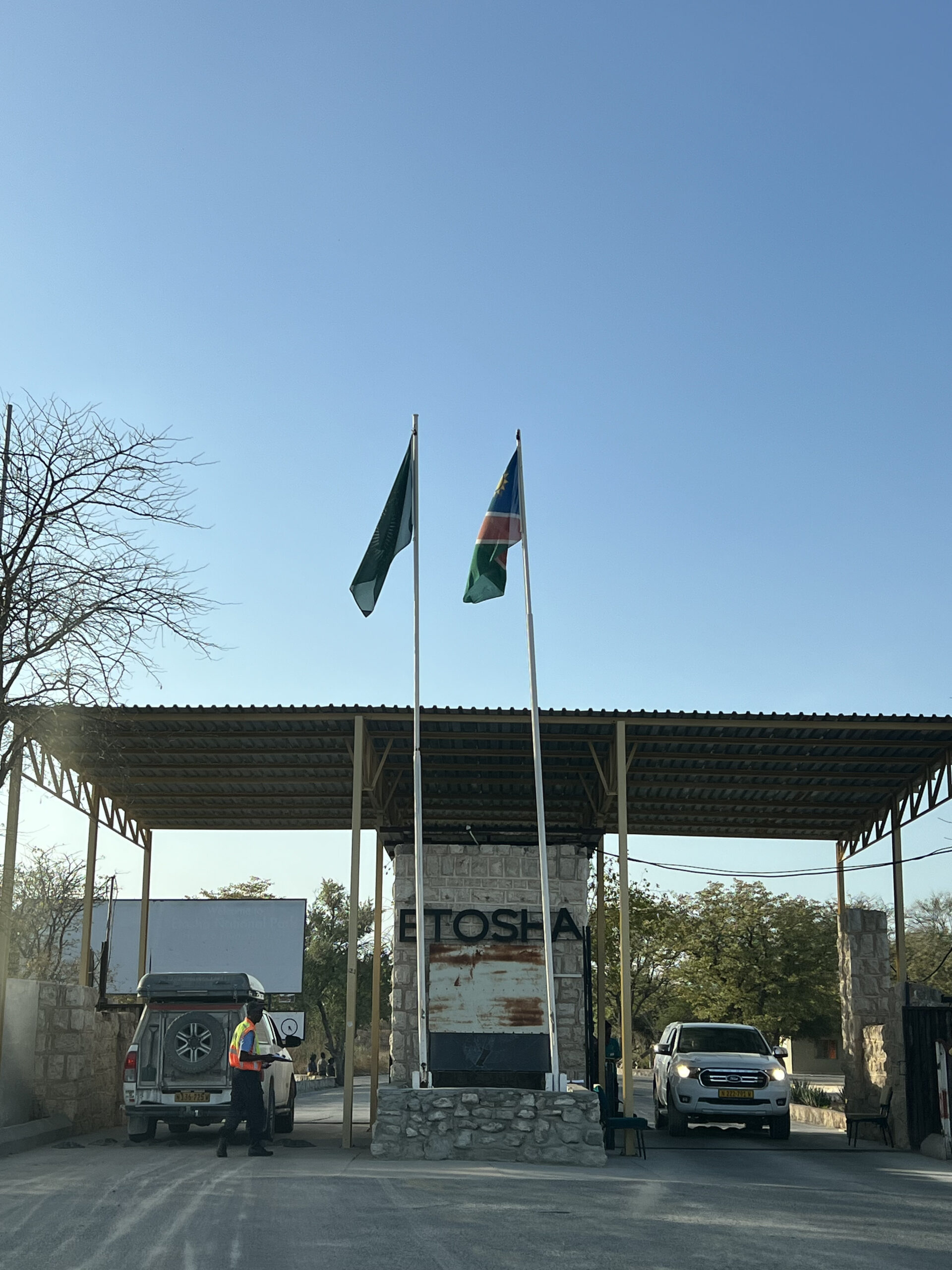
Sossusvlei, a large ephemeral pan, is set amid red sand dunes that tower up to 325m above the valley floor. It rarely contains any water, but when the Tsauchab River has gathered enough volume and momentum to push beyond the thirsty plains to the sand sea, it’s completely transformed. The normally cracked dry mud gives way to an ethereal blue-green lake, surrounded by greenery and attended by aquatic birdlife, as well as the usual sand-loving gemsboks, and ostriches.

We arrived in the afternoon around 3pm and the person at the border post told us that if we don’t have a place to stay in the national park, it is better to come back the next day. Actually, my plan was to visit Sesriem Canyon on the first day and then catch the sunrise on the second day. On hindsight, we should have just paid two days of the national park fees and ignored the guy’s advice, as the fees were not that expensive.



At the end of the 65km 2WD road from Sesriem is the 2WD car park; only 4WDs can drive the last 4km into the Sossusvlei Pan itself. Visitors with lesser vehicles park at the 2WD car park and walk, hitch or catch the shuttle to cover the remaining distance. If you choose to walk, allot about 90 minutes, and carry enough water for a hot, sandy slog in the sun.
For our accommodation, we stayed at Desert Camp self-catering unit. There were other units which include dinner buffet, or others that were for tents only. We wanted to experience the self-catering, so we rented a tool box from the reception, which contains cooking stuff and utensils. We cooked our own meal of Indomie, sausage and fried egg. Our dinner was paired with wine from the supermarket. It was a simple and nice meal.

At night, we were so in awe by the stars in the sky. The remote location of Sossusvlei, far from major sources of light pollution, provides an excellent opportunity for stargazing. The night skies in the Namib Desert are exceptionally clear and offer breathtaking views of the stars, planets, and constellations.
The next morning, we had a quick breakfast and checked out of the desert lodge. We made our way to the entrance of Sosussvlei National Park, which is a 3 minute drive away. There was already a long queue of vehicles formed to get into the park. From the main gate, it is another 60km which took us an hour to reach the sand dunes.
- Prices are in Namibian Dollars NAD and are PER DAY – valid for a 24 hour period beginning at the time of entry into Sossusvlei National Park.
- Children 0 to 8 years are free of charge
- Adults (foreign) NAD 150 per adult per day
- Children (foreign) NAD 100 per child per day (9 to 16 yrs)

The Namib Desert boasts some of the world’s highest sand dunes, some of them reaching nearly 400 metres in height. Surrounded by countless dunes of differing heights, you really can take your pick, however, most people flock to the world-famous Big Daddy and Dune 45. We climbed up Dune 45 and the sun was not shining brightly. It was still quite chilly. Towards noon, you would start to view the heat of the sun beating relentlessly on your back.

Standing at the ridge on the top of Dune 45, we had a breathtaking view of the surrounding area. Dune 45 is a star dune in the Sossusvlei area of the Namib Desert in Namibia. Its name comes from the fact that it is at the 45th kilometre of the road that connects the Sesriem gate and Sossusvlei.

Although it’s much less famous than its neighbour Sossusvlei, Deadvlei is actually the most alluring pan in the Namib-Naukluft National Park – it’s arguably one of Southern Africa’s greatest sights. Sprouting from the pan are seemingly petrified trees, with their parched limbs casting stark shadows across the baked, bleached-white canvas. The juxtaposition of this scene with the cobalt-blue skies and the towering orange sands of Big Daddy, the area’s tallest dune (325m), is simply spellbinding.


Deadvlei is a striking white clay pan surrounded by iconic dead camel thorn trees that have been scorched by the sun. The contrast between the white clay, the dark trees, and the red dunes in the background is a sight to behold. Deadvlei is a prime example of the stark and haunting beauty of the Namib Desert.

A river used to run across this valley, but about 900 years ago, it dried out and the Deadvlei that we see today is the remnants of the parched valley. It is a photographer’s paradise indeed, with well-preserved dead trees. Due to the lack of humidity, the bark does not decompose but instead remains dried out.
Hidden Vlei: This unearthly dry vlei (low, open landscape) amid lonely dunes makes a rewarding excursion. It’s a 4km return hike from the 2WD car park. The route is marked by white-painted posts. It’s most intriguing in the afternoon, when you’re unlikely to see another person.

We left Sosussvlei after lunch, actually it was another 5 hours drive to Walvis Bay and judging from the road conditions, I did not want to drive in the dark. Hence we just grabbed lunch from one of the petrol kiosks, topped up the gas tank and continued on our way.

Along the way, we stopped at one of the highway gas stops, with a nice cafe. As I was feeling sleepy, I ordered a cup of coffee to keep myself awake.

Solitaire is a very small but nice desert town. Many tourists use Solitaire as a stopover en route to or from Sesriem and the Sossusvlei. It is situated in a very sparsely populated area close to the Namib Naukluft Park at the crossing of two important roads: the C14 from Walvis Bay to Bethanien and the C24 from Rehoboth to Sossusvlei.

Soltaire merely consists of a filling station, a shop, a chapel and a bakery with a café. The café is well known for its apple cake, arguably “the best in the whole of Namibia”. A lodge and a campsite complete Solitaire. We had a good break here, for about half an hour, before continuing on the road.




